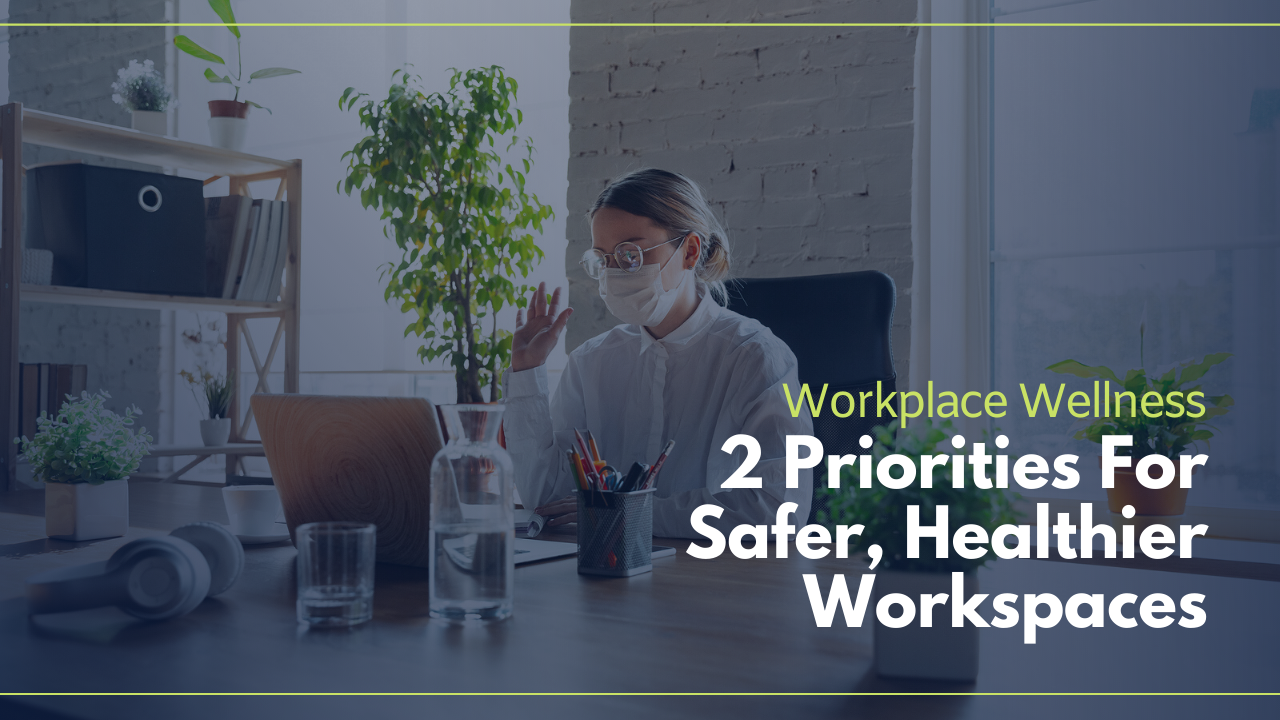- Wellness is now a top priority as organizations figure out how to bring staff back to work safely.
- A renewed focus on employee wellness is a welcome side-effect of the pandemic.
- The two key wellness focal points are creating safer workplaces, and support for mental health.
As organizations figure out how to welcome staff back into the office, wellness will increasingly play a key role in workplace discussions.
As a result of the pandemic, workplaces around the world are changing. Some of these changes will be short-lived, while others will become permanent. Among the latter is a renewed focus on employee wellness.
Over the past several years, workplace wellness has become a priority for many organizations. Companies around the world started implementing a variety of wellness programs, from on-site gyms and yoga lessons, to free healthy food, smoking cessation, and even nap rooms.
As we move forward, wellness will remain a priority, but it will drastically change over the coming months.
The 2 Key Aspects of Wellness in the Future
As a consequence of the pandemic, there will be two key aspects of wellness that organizations will focus on the most:
- Creating safer workplace environments
- Mental health
Creating Safer Workplace Environments
To encourage people to come back to the office, certain safety measures will need to be taken; measures that will safeguard the health of employees at all times.
These measures can not only help reduce the spread of the coronavirus, but can also help reduce the spread of the flu, common cold, and plenty of other respiratory diseases.
Temperature checks and use of face masks in the office will likely be temporary. More permanent changes that will create a safer environment include:
- Installation of plexiglass or office dividers, particularly in open, shared workspace areas.
- An increased focus on air quality; organizations will likely take steps to improve their HVAC systems, provide maintenance more regularly, and embrace new technologies.
- An increase in a fully touchless experience, from entrance points to using the restroom and kitchen appliances.
- Increased cleaning and updated cleaning protocols. While cleaning is something that usually happens in the background during off-hours, employees will likely see more cleaning and disinfecting taking place while they are in the office.
- De-densification of the office and rearrangement of meeting rooms and common areas, through staggered shifts, remote work policies, and use of satellite offices.
- Use of new and emerging technologies to aid with cleaning and disinfection efforts.
Suggested Reading: “Future of Work: How the IoT, AI, and Robotics Can Help Keep Workplaces Clean and Safe”
In addition to the above changes, organizations will also have to think about more permanent design changes they want to make. As it currently stands, because of lack of research and information, many companies are still hesitant to spend a lot of capital to make significant changes that cannot yet be backed by data and scientific research.
As more information emerges, some additional changes are likely to be made.
Mental Health
The second part of the equation in getting employees to come back to the office is to understand what people are feeling and how those feelings could potentially impact their willingness to go back to the office and their performance there.
Levels of anxiety will vary among employees and they will need some time and space to process any new protocols and to adjust to the new normal.
Furthermore, after working remotely for some time, some workers might feel disconnected from their colleagues and from the company itself. Organizations will need to focus on their communication in order to bring back a sense of community and nurture an environment that feels supportive.
Some ways organizations can support mental health as people transition back to the office is by having more regular check-ins, keeping communication channels open, reaching out to employees to learn what type of support they need, and offering information and resources that can help reduce stress and anxiety.
Mental health in the workplace has been gaining traction over the past couple of years. As we move forward, mental health will continue to be a priority for organizations.
There will be a period of readjustment for all stakeholders, and keeping mental health in check will be key to success now and in the future.


 Dr. Gleb Tsipursky – The Office Whisperer
Dr. Gleb Tsipursky – The Office Whisperer Nirit Cohen – WorkFutures
Nirit Cohen – WorkFutures Angela Howard – Culture Expert
Angela Howard – Culture Expert Drew Jones – Design & Innovation
Drew Jones – Design & Innovation Jonathan Price – CRE & Flex Expert
Jonathan Price – CRE & Flex Expert














